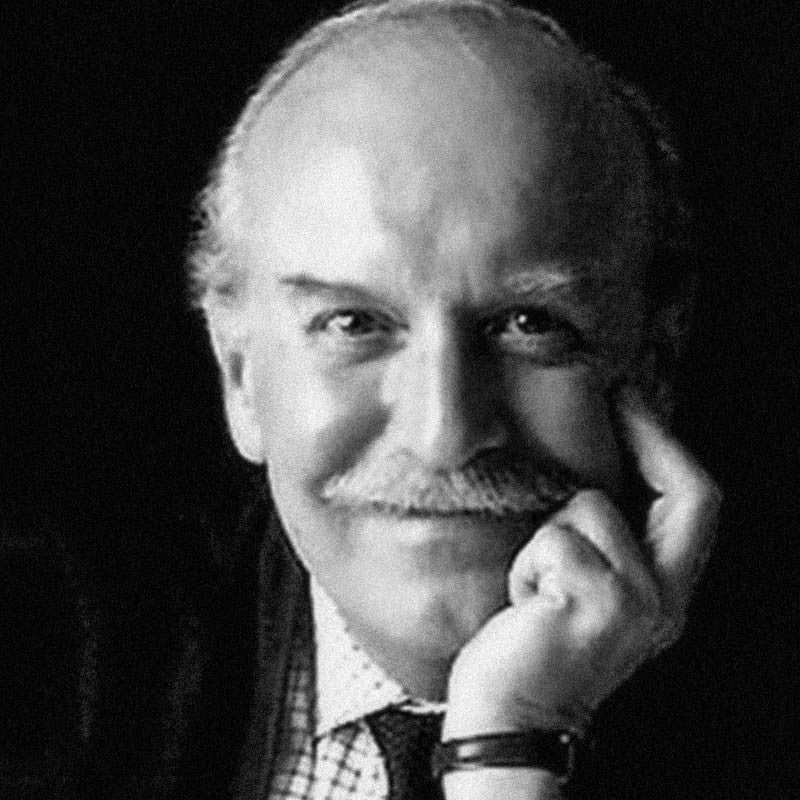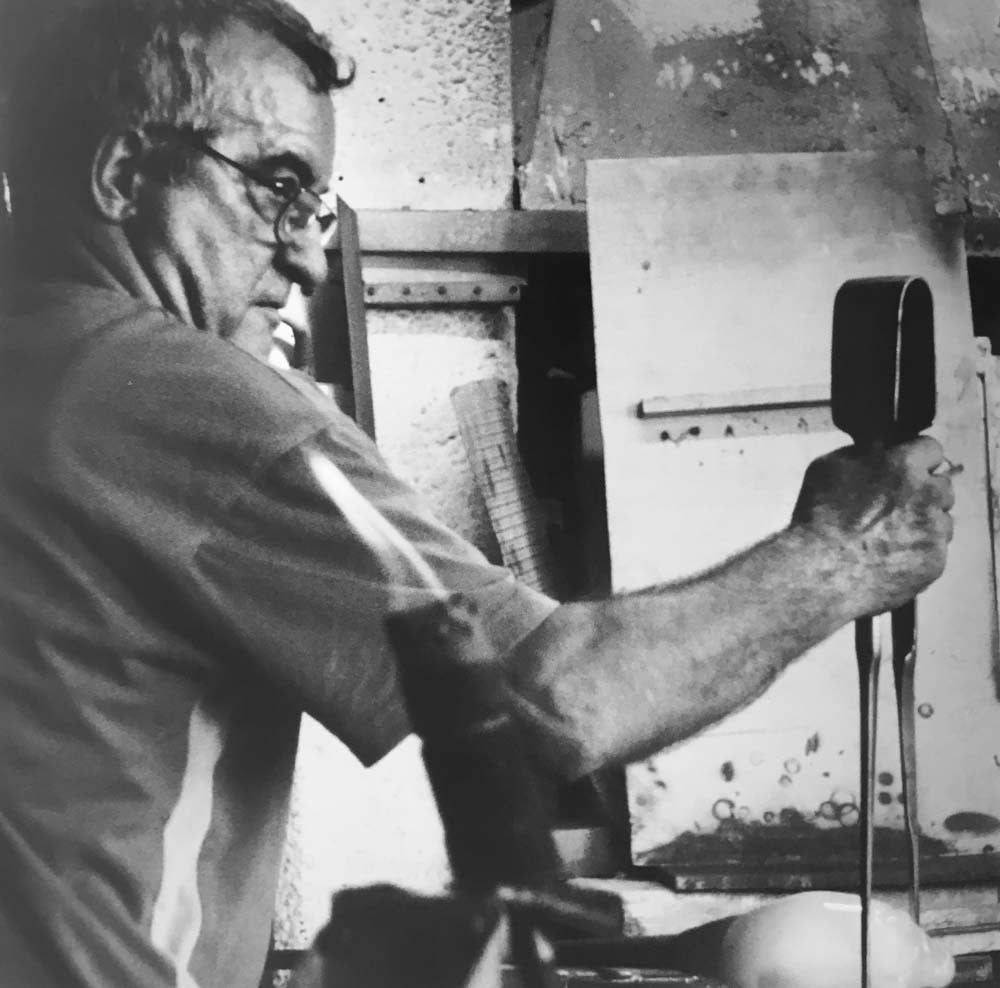At the end of the Second World War, after having spent his youth at the school of the great
Born in 1912, he starts working in glass-making area while still very young and after a brief apprenticeship, first at the S.A.I.A.R. Ferro Toso firm and later at the Anonima Vetrerie e Cristallerie Murano, he works side by side with the sculptor Napoleone Martinuzzi , at the Zecchin-Martinuzzi furnace.
He soon exhibits an innate propensity for modeled figures, to frequent astonishment of all those who see him at work. He will himself say later that in the execution of the objects, he felt his hand to be led by an inner force. This co-operation lasts from 1932 to 1936 and it is essential to his artistic formation, with the opportunity of sharing in the design the first hot glass mass sculptures, a clearly novecento approach, designed by Martinuzzi.
After the closing of this glass- house, he becomes master craftsman at V.A.M.S.A. (Vetreria Artistica Muranese Società Anonima). Here again his contribution in the field of glass sculpture is indeed remarkable, as it is in that of thick materials with particular chromatic effects, such as the so-called fumato glass.
He executes works designed by the painter Luigi Scarpa Croce, such as the dish with fishes exhibited at the 1942 Biennale di Venezia. In the capacity of both partner and director, he moves in 1946 to the new factory Gino Cenedese & C.
With financial assistance from the firm of Salviati & C. , for whom he produced products, he formed in 1950 his own glass firm, Vetreria Alfredo Barbini (reorganized in 1983 as Alfredo Barbini Srl).
With his firm, at the 1948 Biennale, he exhibits an outstanding series of sculptures in hot modeled sculptures, with the surface corroded with acid: “Collasso”, “Putto”, “Diana Nera”.
His strong personality is ill-suited to working under someone else and so he opens the furnace with which he present at the 1950 Biennale di Venezia, continuing his research in the field of plastic effects with glass. As time goes by, he tends to increasingly pure and essential forms and materials.
Some objects are excellent representatives of his evolution, especially the vetro sommerso objects exhibited at the XXX Biennale in 1960, such as the series of “pesci” and “tulipani”. The vases in thick “vetro sommerso” are especially interesting with their finely engraved surface, exhibited at the 1962 Biennale di Venezia.
The objects designed for him in the mid 60s by Napoleone Martinuzzi should be remembered too, simple forms with variously worked surfaces, that represent some of the last creations in glass of the great Venetian Sculptor.
The furnace built to his specific indications in the mid 60s deserve a separate mention. More than a mere furnace it is reminiscent of a Gothic cathedral with the large stained-glass windows reaching ever upward along the walls with different hues; this provides an outstanding effect and solves the problem of natural lightning with great ingenuity, providing the same quantity of light independently of the angle of the sun’s rays.
A true artist of glass, he continues his activity of research, working side by side with his son Flavio, rediscovering and reassessing traditional Muranese techniques.
Among numerous other honors, Barbini was awarded the "Osella d'Oro" by Venice's Associazione degli Industriale and the honorary title "Commendatore" and was named "1989 Venetian of the Year" by the Settemari Association.
Alfredo passed in 2007.







Dejar un comentario
Todos los comentarios se revisan antes de su publicación.
Este sitio está protegido por hCaptcha y se aplican la Política de privacidad de hCaptcha y los Términos del servicio.